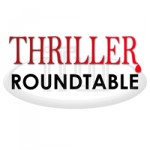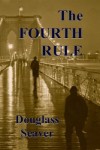

March 9 – 15: “How do you avoid the first chapter pitfall?”
 Do some writers tend to work too hard, too long on the first chapter and neglect the rest of the story? Join ITW members Jean Heller, Douglas Wynne, Douglas Seaver and Leonardo Wild as they discuss how to avoid that pitfall!
Do some writers tend to work too hard, too long on the first chapter and neglect the rest of the story? Join ITW members Jean Heller, Douglas Wynne, Douglas Seaver and Leonardo Wild as they discuss how to avoid that pitfall!
~~~~~
 Most of Jean Heller’s career was as an investigative and projects reporter and editor in New York City, Washington, D.C. and St. Petersburg Florida. Her career as a novelist began in the 1990s with the publication of the thrillers, “Maximum Impact” and “Handyman” by St. Martin’s Press. Then life intervened and postponed her new book, “The Someday File,” to publication in late 2014. Jean has won the Worth Bingham Prize, the Polk Award, and is an eight-time Pulitzer Prize nominee.
Most of Jean Heller’s career was as an investigative and projects reporter and editor in New York City, Washington, D.C. and St. Petersburg Florida. Her career as a novelist began in the 1990s with the publication of the thrillers, “Maximum Impact” and “Handyman” by St. Martin’s Press. Then life intervened and postponed her new book, “The Someday File,” to publication in late 2014. Jean has won the Worth Bingham Prize, the Polk Award, and is an eight-time Pulitzer Prize nominee.
 Douglass Seaver is the author of the highly praised nonfiction book, Four Across the Atlantic, and the award winning short story, The Auction. His latest book is The Fourth Rule, an international suspense novel. He is a graduate of the two-year online Stanford Certificate Program in Creative writing. He and his wife, the painter Cheryl Seaver, live in Essex, CT.
Douglass Seaver is the author of the highly praised nonfiction book, Four Across the Atlantic, and the award winning short story, The Auction. His latest book is The Fourth Rule, an international suspense novel. He is a graduate of the two-year online Stanford Certificate Program in Creative writing. He and his wife, the painter Cheryl Seaver, live in Essex, CT.
 Douglas Wynne is the author of two previous novels: THE DEVIL OF ECHO LAKE and STEEL BREEZE. He lives in Massachusetts with his wife and son and a houseful of animals just a stone’s throw from H.P. Lovecraft’s fictional town of Arkham.
Douglas Wynne is the author of two previous novels: THE DEVIL OF ECHO LAKE and STEEL BREEZE. He lives in Massachusetts with his wife and son and a houseful of animals just a stone’s throw from H.P. Lovecraft’s fictional town of Arkham.
 Leonardo Wild is a full-time writer in Ecuador. He is the author of more than 200 articles on various subjects for magazines both in Ecuador and Spain, and has published/produced both fiction, non-fiction, TV scripts, documentaries and done various translations, the latest: De-Mythifying Money (under contract with The Pachamama Alliance). As a scriptwriter, he has worked as a corporate image consultant, marketing consultant and translator for technical manuals for TOYOTA, Ecuador.
Leonardo Wild is a full-time writer in Ecuador. He is the author of more than 200 articles on various subjects for magazines both in Ecuador and Spain, and has published/produced both fiction, non-fiction, TV scripts, documentaries and done various translations, the latest: De-Mythifying Money (under contract with The Pachamama Alliance). As a scriptwriter, he has worked as a corporate image consultant, marketing consultant and translator for technical manuals for TOYOTA, Ecuador.
- LAST GIRL MISSING with K.L. Murphy - July 25, 2024
- CHILD OF DUST with Yigal Zur - July 25, 2024
- THE RAVENWOOD CONSPIRACY with Michael Siverling - July 19, 2024
